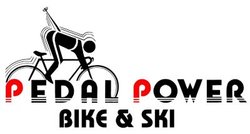As mentioned, we recently fit an active and healthy 18 year old woman with no history of injuries and no obvious structural malformations. She STILL needed a GURU fit! Better still, a GURU fit from Pedal Power.
Here's what happened.
Our initial assessment revealed no significant issues. She had better than average hamstring flexibility, slightly reduced spinal flexibility, but no spinal anomalies. We measured her shoulder width, and determined that the original handlebar was fine. Observation of her wrist rotation confirmed that.
Her first and loudest complaint was significant soft tissue pain at the front of the saddle. This came up before we had even started the initial assessment. It was clear that that would need to be addressed first. Observation of her position showed that her pelvis was rotated noticeably backward to escape the pressure from the nose of the saddle. We measured her sit-bone width, and replaced her saddle with one selected to address this problem. The new saddle was a big improvement, but it required several angle adjustments to optimize her comfort.
Once that was addressed, other issues surfaced.
We made numerous seat height adjustments until we determined the optimal seat height. With the GURU that was quick and precise. With every parameter, it's possible to make extremely rapid adjustments, as small as 1mm or as large as 30mm. While doing that, we kept re-adjusting the handlebar height to avoid putting her in too extreme a drop position: also quick and easy.
Her knee-ankle alignment appeared reasonable, and she reported no joint (knee, ankle, hip) discomfort. She was already using very forgiving road pedals; it was unlikely that any others would yield better results. We checked and adjusted the fore-and-aft position of her cleats. Then we checked the rotational centering of her cleats, and determined that her left cleat was not correct. We added 5 degrees of toe-in, and suddenly her “knee feels much better.” Notice that she had not complained of any discomfort in that knee.
At this point we addressed the neck pain and hand numbness of which she had also complained. Together, these suggested that her handlebar height (“rise”) would need to be higher relative to her seat. After multiple rapid adjustments, we determined the optimum handlebar height, reach, and angle. However, excessive hand pressure still remained. Further increase in handlebar height did not correct that.
With a conventional fit, at some point you need to set the saddle setback, or seat fore-and-aft. It is well established that a change in saddle setback will change the Center of Gravity of the rider, and thereby have a great effect on both the rider’s feeling of balance, and the pressure on the hands. Most fitters don’t even try to experiment with this, because it’s too time consuming, and that means the rider will have difficulty discriminating between positions. They merely apply the KOPS rule.* Luckily, with the GURU, this problem is eliminated. Rather than simply changing the saddle setback, you press a button to change the effective seat tube angle; it takes 2 or 3 seconds. In 2 or 3 seconds more you can change it back. Even better, the GURU actually rotates your entire position. This means that the seat–pedal distance, seat-handlebar reach, and seat-handlebar rise/drop that you’ve carefully determined, all remain the same.
When we reduced the effective seat angle by 0.5 degrees, the excessive hand pressure disappeared. All other angles, “steeper” or “slacker”, brought back the hand pressure, so we had determined the optimum effective seat angle, and thereby the saddle setback.
But this rider also had foot numbness and “pressure”. We examined her stance (Q-factor) and foot stability using the Aline device, and saw that both of her ankles rolled inward. Installing Aline footbeds substantially improved that.
We had now examined and dealt with soft tissue pain at the nose of the saddle, neck pain, hand numbness, knee tenderness and foot numbness. Virtual all positions were already optimized: seat, seat width, seat angle, seat height, saddle setback, bar width, bar height, bar reach, bar angle, pedals, Q-factor, cleat position, and cleat angle.
However, she still had one additional problem: substantial discomfort on the inner thigh at the saddle. The location of this point of discomfort was interesting. For one thing it was distinctly asymmetric, and for another it was in a region where there should not ordinarily be any significant pressure. We installed a small wedge in the outside of the opposite footbed, and the pain disappeared. Voila!
The GURU is a tool that has capabilities that cannot be duplicated by any other system. But if you followed the story, you noticed that most of the changes came about via observation from the fitter apart from the GURU. Here we had a fit, active and healthy 18 year old, and she still benefited enormously from a GURU fit at Pedal Power. We’re pretty certain you’d benefit too.
*KOPS stands for “Knee Over Pedal System”. It’s the claim that the correct saddle setback can be determined by dropping a plumb bob from the knee, and adjusting so that the bob intersects the pedal spindle. This idea was completely discredited in a paper written by Keith Bontrager in the early 90’s. Nevertheless, it is still in wide use because there are no other simple formulas that can be applied. One renowned fitter with whom we took courses said (literally!), “I know KOPS is no good, but what else are you going to do?” Interestingly, two years later, the same course instructed us, “Don’t worry about KOPS at all. You’ve got a 4cm range of fore-and-aft adjustment to work with.” Duh.
